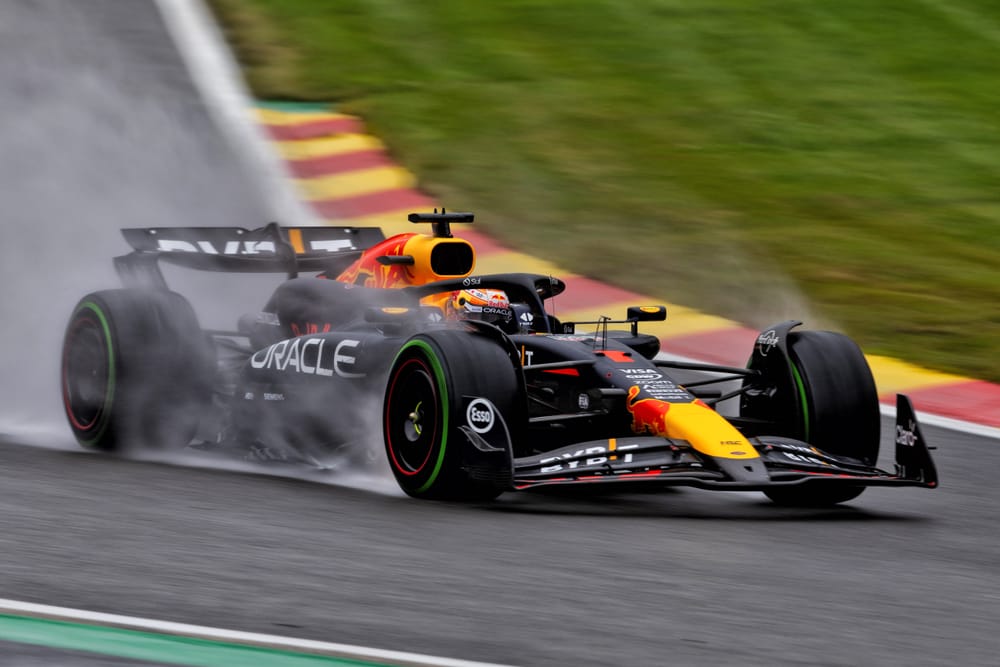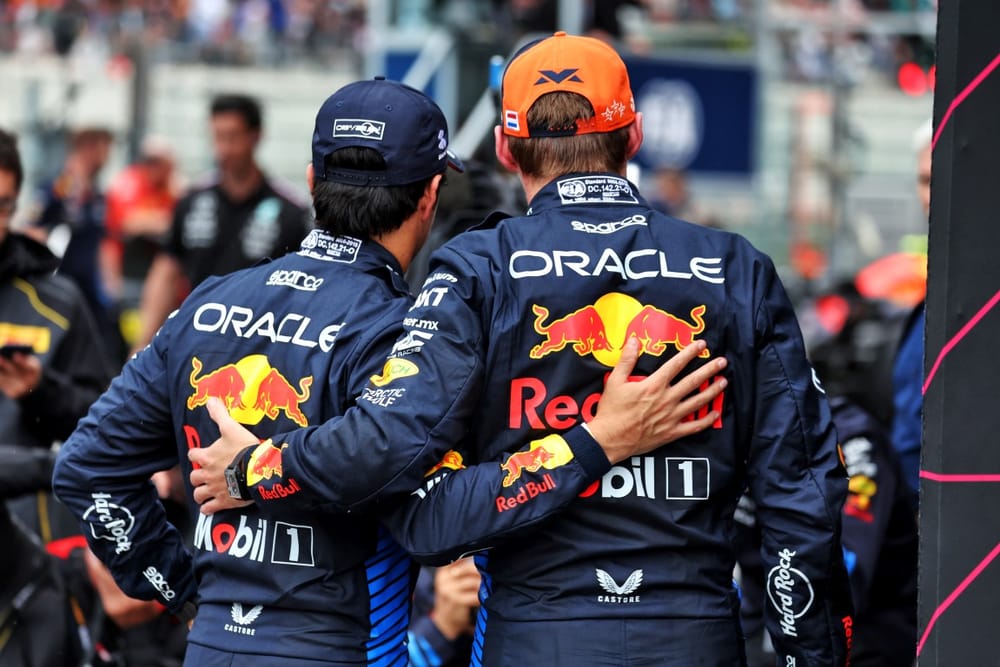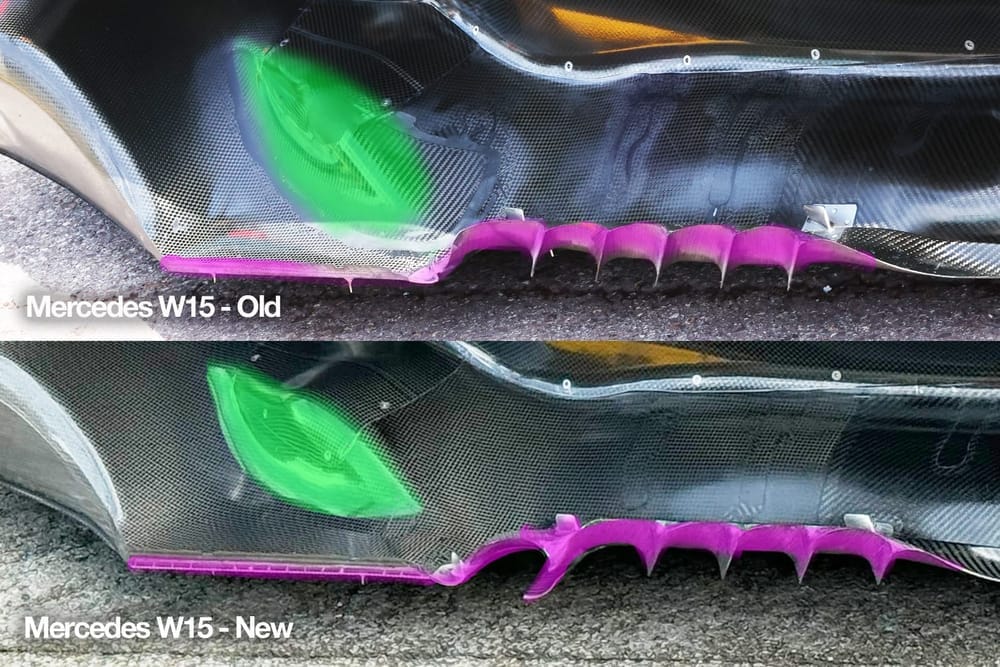Up Next

It’s not a new thing for Max Verstappen’s Red Bull to qualify comfortably fastest around Spa but then to be taking grid penalties.
He’s dominated here for the last two years like that. This time he emerged from the murk on the intermediates to be fastest by a margin of over 0.6s from an over-achieving Charles Leclerc.
It was an advantage which magnified itself by allowing him to get through Q1 and Q2 using only a single set of inters in each session, leaving him uniquely with two new sets in Q3 and thereby giving him the perfect combination of new tyre and track grip, a combination out of reach to everyone else.
But he at least does not think this is a portent of history repeating on race day from his 11th place grid slot.
“I’m not as confident as I was in the last three years around here in coming to the front. I still see it more as a damage limitation race.”
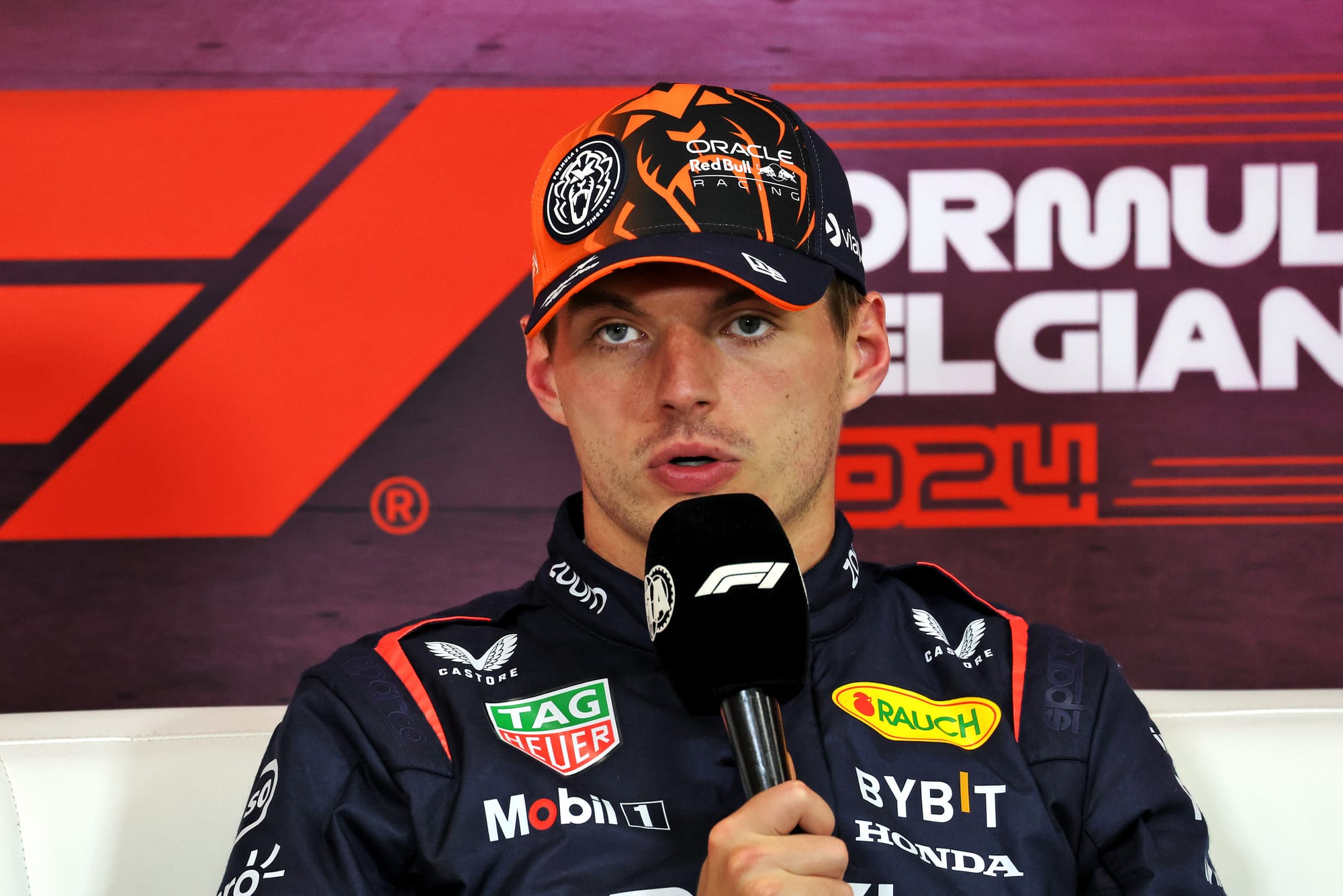
Others – in particular McLaren’s Lando Norris who has qualified only fifth fastest ahead of team-mate Oscar Piastri but behind Leclerc, Sergio Perez’s Red Bull and Lewis Hamilton’s Mercedes – don’t see it like that.
“The whole weekend Red Bull have been better than us here,” Norris said. “I just don’t think they showed their cards yesterday and we did. That’s pretty much all we’ve got.”
There’s a very good reason the McLarens qualified only fifth and sixth in the wet. They ran significantly less downforce than the others, especially Red Bull. But race day is forecast to be dry. So McLaren ran the smaller wing it’s had all weekend and just continued with the greater angle it ran in FP2, just enough to keep it in its efficiency range.
That being the case, there’s a logic to both the Verstappen and Norris interpretations of who really has the advantage.
“Looking at McLaren’s pace on the [dry] long run yesterday it looks incredibly strong,” says Verstappen. “They looked very comfortable out there. But even though they are starting a little far back they will quite comfortably challenge for the front… I’d be very happy if we could just match that race pace – and starting further back and on different tyres, it’s definitely just a damage limitation race for me.”
Verstappen ran the very big wing he’d used in Friday FP1. But even the trimmed one he’d subsequently tried in FP2 with the cutaways on the outboard was still carrying more downforce than anyone else. For today (and the rest of the weekend) he was back on the original even bigger one.
So he was 0.8s faster than Norris through the turns of sector 2. He was over 0.4s quicker through there even than the next-fastest, Leclerc in a Ferrari which was carrying more downforce than the McLaren but a lot less than the Red Bull. Yet Verstappen was still slightly quicker than Norris in the straights of sectors 1 and 3.
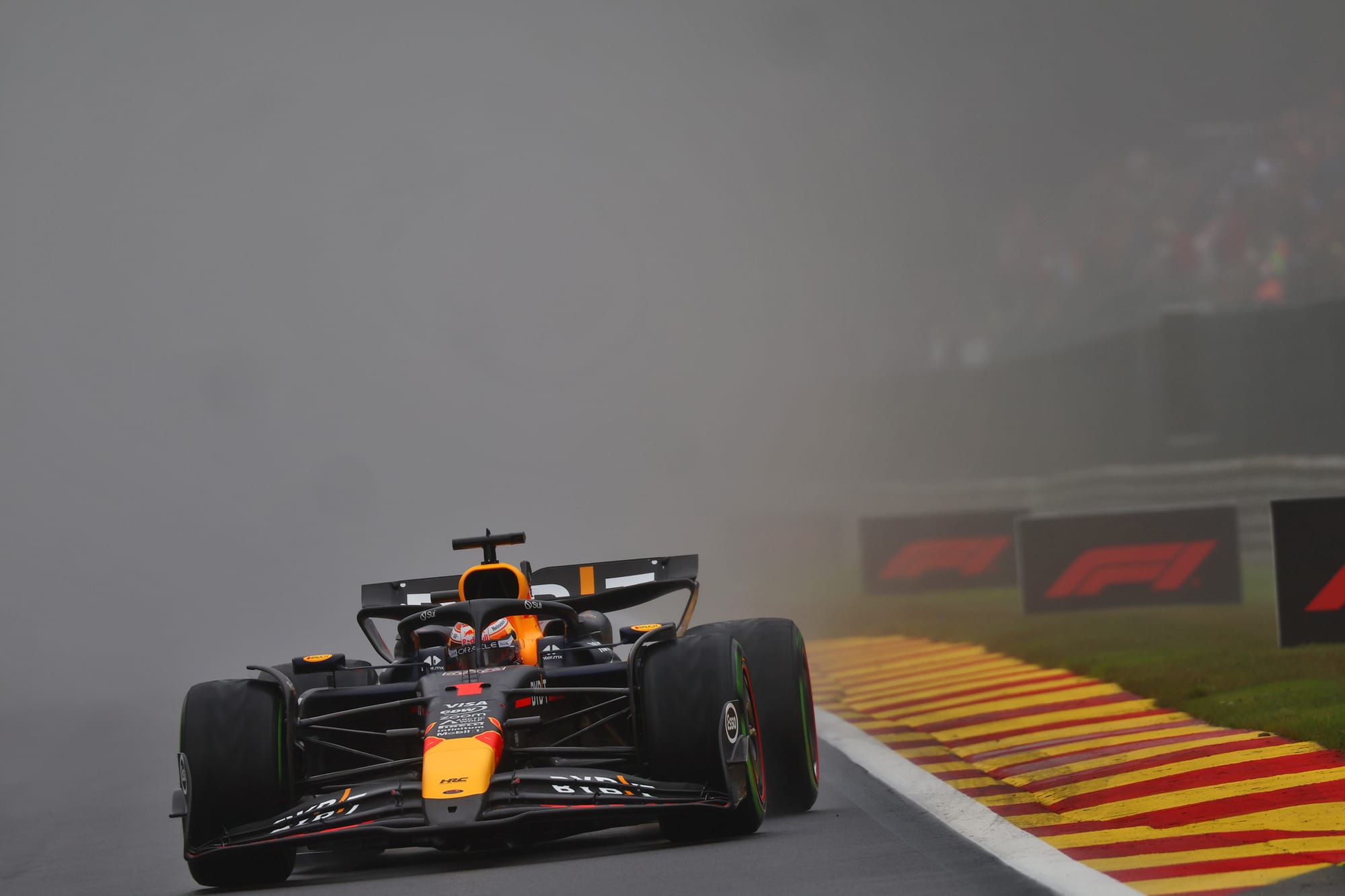
A high-downforce level wing is generally faster over a single lap of Spa in the dry and obviously even more so in the wet. But in the dry, obviously it potentially makes the car less raceable, makes it difficult to attack or defend on the long runs to the overtaking spots of Les Combes and the Bus Stop. Maybe. Verstappen doesn’t see it like that. He’s seeing it from a tyre deg perspective.
Tyre degradation on the new surface was significantly higher for everyone than expected, a lot higher than was the case on the old surface.
“I hope [the bigger wing] will help tomorrow as it’s a bit warmer and there’ll be a bit more sliding," Verstappen said. "Look at the McLaren and the skinny wing works for them. The DRS effect is quite big here, but I think it’s more important to be good on tyres. If you’re good on tyres you can pass people.”
That’s why the Red Bull is quick in sectors 1 and 3 despite the big wing; its DRS effect is particularly powerful. That being the case, you can see what Max is thinking.
So long as he’s in the pack working his way past the slower cars (which for him includes the Ferraris and Mercs) and getting their DRS, he’s not going to be vulnerable. By the time he’s got past them, he’s reckoning their tyres aren’t going to give them the traction he’ll still be enjoying and so he’ll be out of their reach by the overtaking zones.
With some help from Perez (who starts from the front row alongside Leclerc) it might just allow him to nudge up towards the McLarens, which he feels confident will be running at the front by then.
Verstappen has nagging doubts but they are not about his wing level. “In recent races [McLaren] have had a bigger advantage on race day than over a single lap. Especially when it’s warm. The temperatures are going to be higher tomorrow. And we’ve kept only one set of hards and they’ve kept two. I’m not sure how that’s going to work out.”
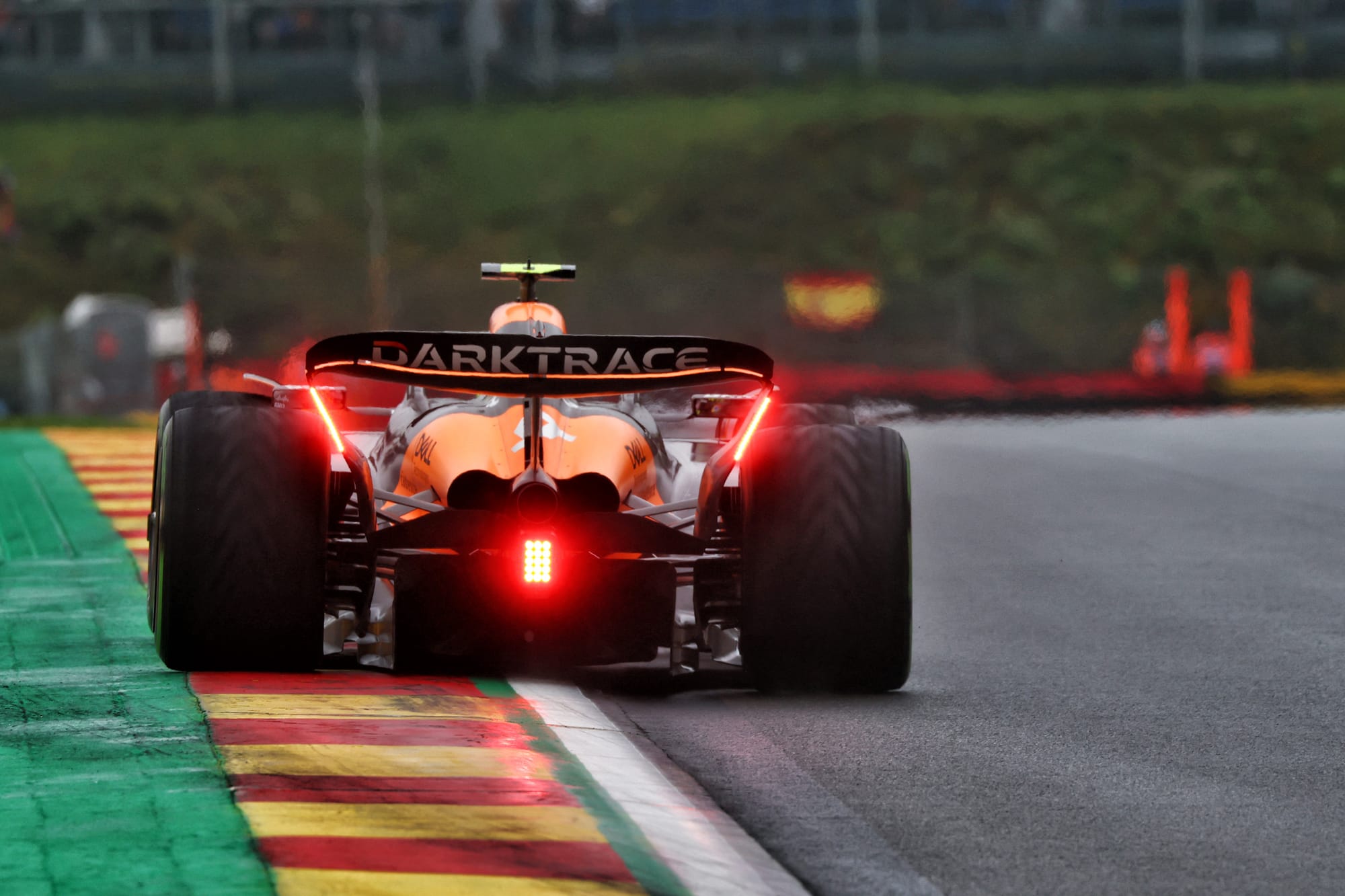
The McLaren’s inherently better tyre deg and the more robust available tyres, together with how hard Max will have to work his own tyres in coming through from P11, has him worrying there’s going to be no Sunday downside to McLaren’s low wing choice.
“The lower downforce hurt us today but should pay us back tomorrow,” agrees Norris and he takes the point about higher track temperatures seeming to help the McLaren relative to Red Bull. Before then saying he’s just not clicking with the car here in the same way he has at recent races, that he’s not super-confident through the high-speed sections.
Piastri – fastest in the race sims yesterday, around 0.4s ahead of Verstappen - sounds a whole lot more confident. Asked if this was winnable from sixth, he said, “I think so… although it’s one thing to be fast in practice, another to be fast in the dirty air of cars in front. But let’s see. I think we have a very quick car. It’s going to be an exciting race, I think. The pace is going to be a bit up and down. I think Max will be coming through but I think tyre deg is a very big question mark.”
“We didn’t want to compromise our top speed tomorrow,” said Andrea Stella. “I don’t think the starting position is going to be the dominant factor. We just have to be there at the end of the race and do a good job managing tyres and use the car’s top speed. I think if we blend all these things together we’ll have a good Sunday.”
Norris is notoriously a glass-half-empty kind of guy. But he’s not alone in his doubts about holding Verstappen off. Lewis Hamilton – third fastest in a Mercedes with its new floor replaced by the old one in an effort to banish the bouncing - agrees with him. “The McLarens and the Red Bulls are much quicker than us, the Ferrari about the same. But I think Max will be coming through because they are the quickest this weekend. Holding on to him will be a hell of a fight. But I’m ready for it.”
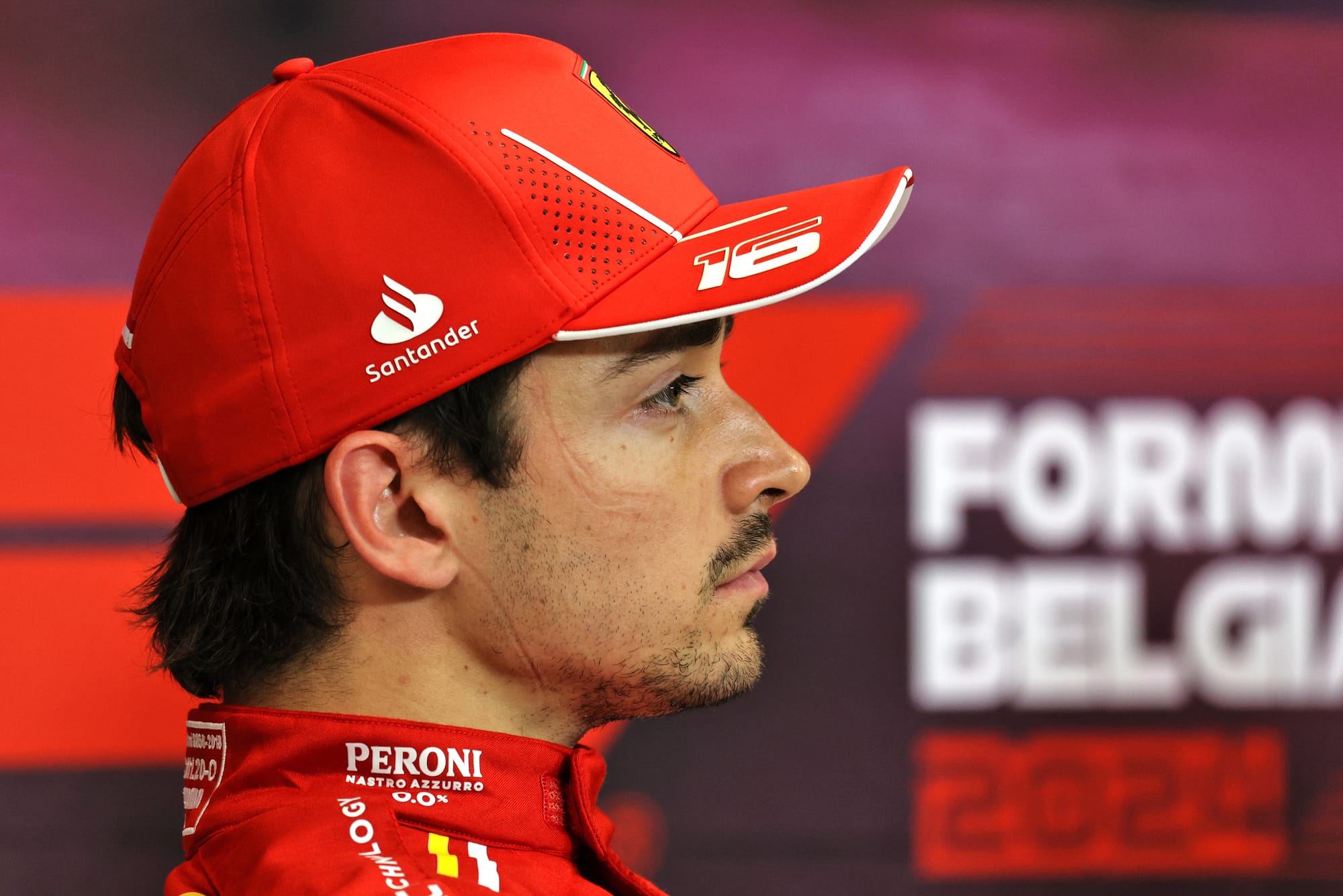
So far, little mention of the man who will actually start from pole. Leclerc’s second-fastest time was a superb lap in a Ferrari which, once he’d found a way of bringing the tyres in, was very nicely balanced. “I think in the dry the most we could have hoped for would be around P5/P6,” he said.
He showed a great sense of where the grip was on a surface which was extremely variable from corner to corner and his commitment through Pouhon was deeply impressive. Carlos Sainz in the sister car lost the tyre temperatures and was spectacular in his oversteering progress, but relatively slow. He ended up P8 0.7s adrift of his team-mate and one place behind George Russell’s Mercedes.
So we are left with two key questions. Is the Red Bull really just inherently faster than the McLaren here, as Norris believes? Certainly, Perez’s strong showing in qualifying third (albeit over 0.6s adrift of Verstappen) suggests it’s a lot more competitive than in Hungary. The only time it has lagged to the McLaren was in FP2 when it was running the trimmed wing. But then there’s race pace.
Which brings us to the tyre deg question. if – and it’s always quite a big if at Spa – the weather is as forecast, we have a tyre deg-dominated race. Logic says that more downforce equals lower tyre deg and that’s what Red Bull’s whole strategy is about.
But it has happened at Spa before that the tyres can have too much downforce. The very high loads through fast long corners can actually work the core of the tyre too hard, so it can no longer adequately support the tread.
It’s even happened to Red Bull before around here in the Vettel era. If that were to be the case, then McLaren’s choice of wing may turn out to be inspired.


